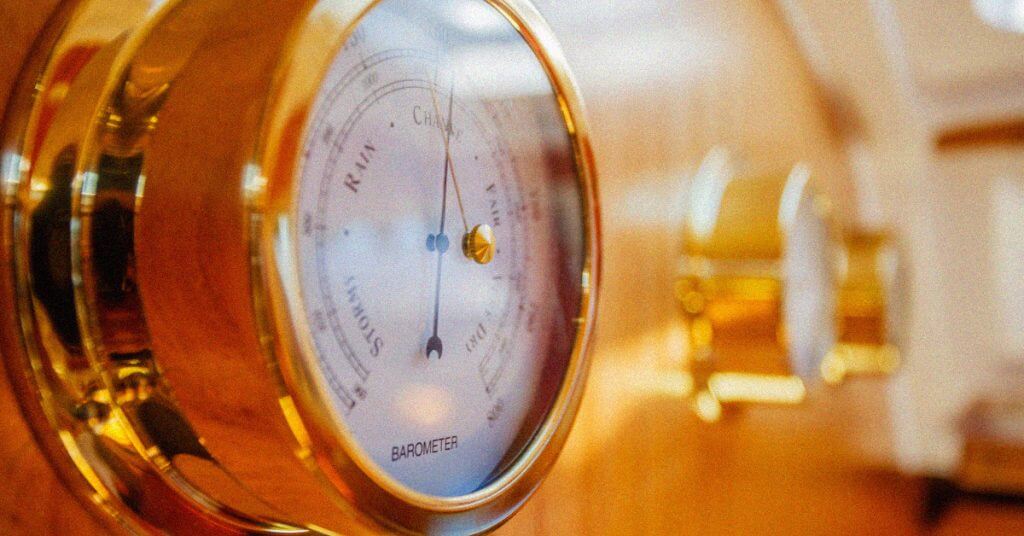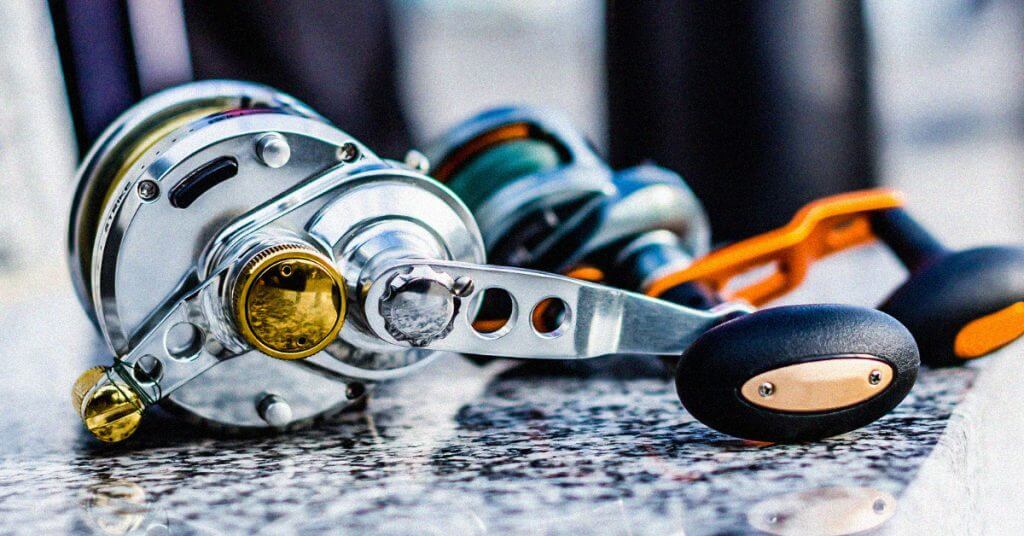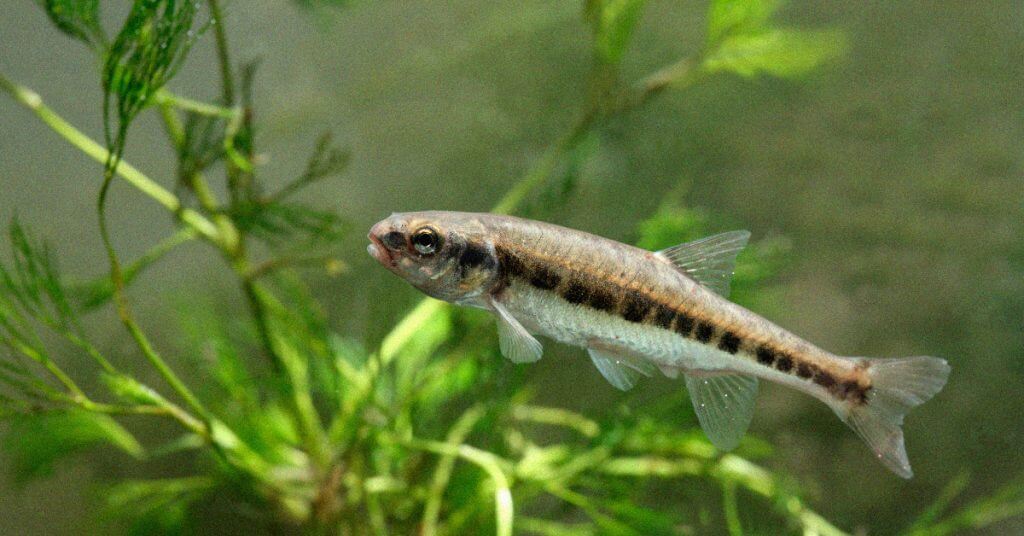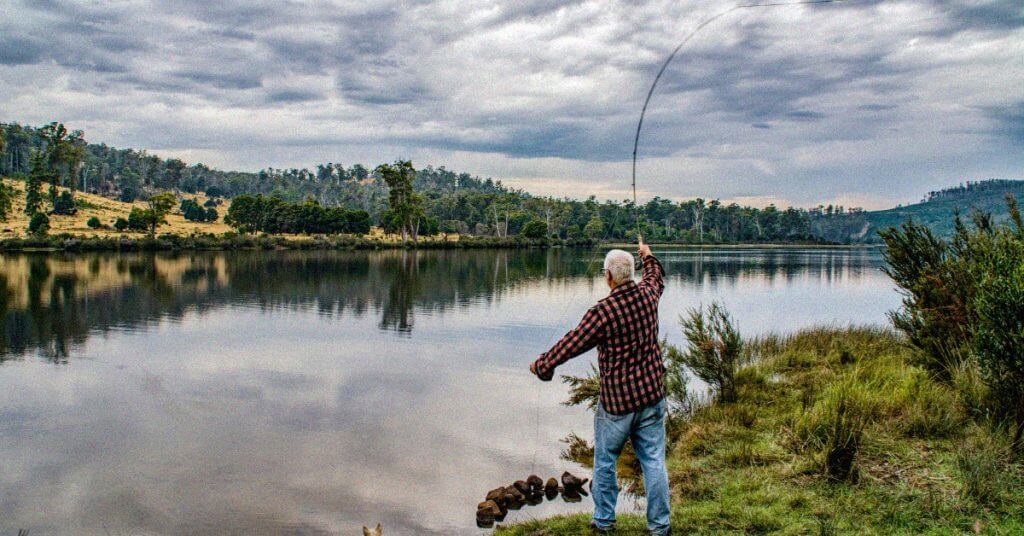With summer comes the end of the hyperactive spawn season and the water temperature rises.
I’ve done plenty of 4 am rises to get to the lake before sunrise but that strategy isn’t for everyone.
If you’re a morning person like me, you don’t have to worry about summer bass fishing tips because you’ll have no problem hooking some bass.
It’s those people I see putting their boat in the water at 11 when I’m heading home for the day. Those are the guys that could use some help.
Do you fit that description? If so, these tips will help you during the hot Summer months.
How to Catch Bass in Summer: 5 Tips
You may have heard that fishing in the hot summer is too tough. Since the summer bass can be scattered or lethargic, you might find plenty of discouraged anglers around the lakesides.
Bass fishing in the summer isn’t so simple. But once you know the right summer bass fishing tips, you can take advantage of the environment and have an awesome catch.
1. Find Cover
Ask any veteran about how to catch bass in summer, and one of the first things you will hear is to look for shade. In reality, there’s a lot of science behind that.
Like us, fish needs the Vitamin D generated from sunlight. But they also need shade to survive, especially when the temperatures rise.
You may find it hard to believe, but fish can get sunburns too. In fact, some fish even produce their own sunscreen.
Most predatory fishes, including bass, have a habit of hovering in shaded areas. In temperate lakes, fish are attracted to shade generated by floating objects.
One reason for this is related to light and underwater visibility. The shade-producing objects reduce the brightness of sunlight and also the background light.
This allows the fish to observe the approaching objects with more clarity. A bass under a shade can see sunlit objects at a longer distance with more clarity.
And it’s not just the predatory fish that loves the shade. Smaller prey fish will prefer cooler spots under the cover too.
Now that you understand the importance of shade, here are a few points you need to keep in mind.
- The shade keeps changing on a lake depending on the time of the day. Since the sun rises in the east, the eastern banks will be shaded for the longest period in the early hours.
In the afternoon, the shade will shift to the western bank. - Bass will move around shades created by structures, docks, or tree branches and wait for the prey fish. Thick grassy areas or lily pads also provide sufficient shade for the bass.
The darker the shade, the better it is for the bass. - Explore the shade lines or the edge between sunlit spots and the darkness. Big fish often prefer to stay along these edges and wait for the prey fish to move through the lighted areas.
That way, they don’t have to move further into the warm waters.

2. Avoid the Middle of the Day
One of the obvious tips for summer bass fishing is avoiding the hottest part of the day. Personally, I prefer the early morning hours as that period is calmer on the water
During summer, the water will get hot as the sun rises higher. So the fish will head towards deeper corners to cool off. In other words, you won’t find any active fish in a body of water in the middle of the day.
At the same time, the amount of shaded areas also decreases as the sun goes up. With limited shade near the surface, the water temperatures will be higher too.
That will drive the fish further into the deep waters where sunlight penetration is less.
Apart from that, midday fishing isn’t the most comfortable option in the heat of the summer. If you’re out for a long fishing trip, staying hydrated and healthy is a necessity.
For that, the cooler hours of the day are the best time to fish for bass in summer.
Then again, the situation can change depending on the weather. If you have a cloudy day, you might find the bass moving towards shallow waters even in the late-morning hours.
Additionally, wind action can churn up the water and make the bass go for a bite.
3. Look for Drop Offs

A great spot to look for bass in a lake during summer is a sharp drop off. Not only the bass but many other varieties of fish like drop offs with steep banks.
In my years of experience, I have learned that shallow-to-deep transition points are one of the best zones to connect with bass.
Unless you’re familiar with these spots, study the contour map of a water body or use a depth finder.
Note, in many lakes drop offs also occur in stages. The shallow bed can drop to a depth of 30 or 40 feet in three or four stages. In summer, the deeper drop offs are the areas of cooler water where the bass will haunt.
Larger predators like bass, find it a great spot to hide in the depths and let the bait come on into the shallows. The steep walls also make it difficult for the prey to escape.
Basically, these are the areas where the bass is moving constantly from the shallows to the deep and the other way round. So the chances of the bass spotting your bait are much higher than in the other areas.
In a river system, the bass often uses sand drops to avoid the current. Smallmouth bass love to ambush the schools of shad that frequent these spots.
Quite often bass like to hover just above the thermocline and wait for prey.
A thermocline is the transition layer in the water column that separates the hot water at the top from the cold water at the bottom.
I have noted that drop offs are even more potent when the bottom is hard. Too much silt and sand may not be the best choice for bass.
Rocks structure in the bottom can also create small holes or pits that can provide hiding spots for the baitfish
The low light hours are the best periods to target the drop offs. You can move along the edge and cast parallel to it. Let the bait drift slowly or allow it to fall over the edge.
4. Use the Right Lures

Speaking from experience, there isn’t a fixed set of lures that work best in summer. The best summer bass lures are the ones that present a tempting snack for the bass.
In fact, nothing is off the table when it comes to summer bass fishing lures.
In general, smaller baits under 2-inches work best during summer. That said, the bass is hard to predict. So when the standard baits aren’t working, don’t hesitate to use something different.
At all times, the standard rules for lure selection apply. That includes choosing lures of natural colors in clear water and bolder colors when the water is murky.
If you’re fishing in the early hours or in 1 to 5 feet of water topwater lures, spinnerbaits, swimbaits, and jerkbaits are good choices. For deeper waters jigs, spinnerbaits, and lipless crankbaits that resemble baitfish will work.
Here’s a look at some of the best lures for summer bass fishing that I have found success with.
- When you have located the fish in the deep, using a drop shot rig is a good idea. This will put the bait right where the bass is lazing.
Soft plastic worms and finesse jigs are the best options as drop-shot baits. Slow down your retrieve and allow the lure to remain in the strike zone for longer periods. - I have found spinnerbaits a great choice for attracting the bass with their noise of approach.
Since spinnerbaits combine a lot of effects into one lure they have a higher chance of attracting the attention of the lethargic summer bass. - During the periods of dawn and dusk, topwater lures are a good option. Among the wide variety of lures available, topwater frogs, poppers, and walking baits with a weedless Texas rig are some of the best options.
- If you know how to handle live baits, they are one of the best options for attracting trophy bass in summer. Nightcrawlers, minnows, and shads are some of the popular choices.
5. Understand Barometric Pressure

Pro anglers take into consideration various factors like water temperature, light intensity, and moon phase to ensure a successful fishing trip.
But truth be told, barometric pressure is one of the least understood factors. Most importantly, it has a significant effect on fishing.
Barometric pressure is the measurement of atmospheric pressure in millibars. Basically, it’s the weight of the air on everything on the planet, including the fish.
The standard atmospheric pressure at sea level is 14.7 pounds per square inch and it keeps changing depending on weather systems.
In normal conditions, a pressure between 29.70 and 30.40 in Hg (mercury column) is favorable for fishing.
While there are plenty of myths around the subject, there have been a few studies about it too. In reality, the fish are affected by pressure due to their swim bladders.
The bladder contains air that provides fish with the necessary buoyancy to remain steady at a certain depth.
As the atmospheric pressure changes, the swim bladder needs to change shape to offset the effects. It gets compressed with higher barometric pressure and expands as the pressure drops.
When the bladder expands, the fish feel uncomfortable. They tend to move towards higher depths where the water pressure is more. This will help in deflating the bladder.
The effect is more pronounced for fish with larger swim bladders. So they will head to lower depths in case of a storm.
Fish with smaller bladders won’t experience the pressure changes so drastically. Even so, predatory fish will also follow their prey to the higher depths in such conditions.
Likewise, when the barometric pressure rises, the bladder deflates. This will make the fish rise closer to the surface. But this will not happen instantly.
They will take one or two days to get acclimatized to the pressure changes and then rise closer to the surface.
Generally, when the bass head to lower depths, they are in a certain state of discomfort and will be less inclined to feed.
That doesn’t mean bass will not bite at all. But, you’ll need the most attractive lures and a lot of patience to tempt them. Choose slower lures as the bass will tend to conserve energy during this period.
But it’s when the pressure starts dropping before a storm you should expect the best results. Most fish will go into a feeding frenzy before heading to deeper waters.
In fact, that led to the coining of the term” fish on a drop”.
So, one of the best summer bass fishing tips is to set up your baits just before the barometric pressure drops.
The best way is to keep an eye on a weather app to track the pressure readings. And if you see the clouds rolling in, chances are the pressure might be dropping.
Best Time to Fish for Bass in Summer
The low light periods around dawn and dusk are the best time to fish for bass in summer. If you’re heading out with the sun at the peak and a noisy summer crowd around the lake, bass are less likely to bite.
In case you see a sudden rainstorm approaching after a heat spell, this is a period when the summertime bass will be more active.
To avoid the crowds, one of the best options is to try night fishing. With the environment getting quieter, the bass is more likely to start feeding again.
Besides, the oxygen saturation in the water goes down at night. This is because the aquatic plants stop the mechanism of photosynthesis.
So the bass is likely to be near the surface where the oxygen levels are higher.
There are theories that state that full moon nights are best for fishing. But frankly, it’s not always possible to plan our fishing trips based on moon phases.
Some research has shown that lunar phases aren’t particularly relevant for freshwater or lake bass fish. However, the effects might be different in the ocean where there’s a higher volume of water to move.
That said, bass will need some light to look for prey. So you’ll need some amount of moonlight to make them bite.
Where Do Big Bass Go In Summer?
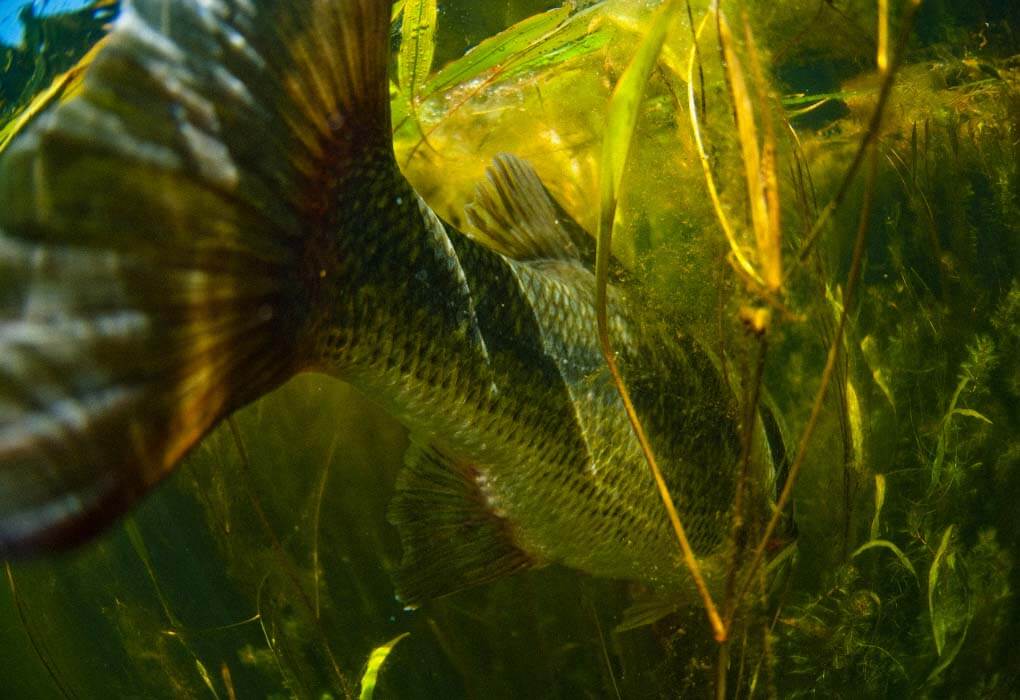
A common concept is that the big bass are hardly found in summer. While there’s some truth to the statement, it’s not entirely true.
In truth, there are multiple factors that influence the movement of the big bass.
One thing is, as the water temperature rises, the amount of dissolved oxygen in the water will come down. With less oxygen available, the metabolism rate of the bigger bass will come down.
That means they will slow down and be less active.
But not all largemouth bass will behave similarly. That means they won’t stop feeding during summer nor will they move towards deeper water.
Since the bass is cold-blooded, a higher water temperature can also raise their body temperature and metabolic rate. Thus, they will feel more energetic and will be eager to seek out prey.
In most cases, they will seek the ideal water temperature that supports an optimized metabolic rate.
But, baitfish like gizzard shad prefer cooler temperatures. So a largemouth might move out of its comfort zone and follow them into deeper and colder waters.
In many cases, the bass caught in summer is smaller in size. That’s because these fish can withstand heat better than the larger ones.
They also need less oxygen to function and can move around more comfortably in the warmer zones of the water column.
But that doesn’t mean the big bass aren’t there. They can be found during the cooler periods of the day mostly in shady areas or under dense vegetation.
If you’re really struggling, I’d highly recommend using the best fish finder if you find yourself fishing during an exceptionally hot period.
The technology can help you pull bass out that you would otherwise be unable to find.
What Temperature Do Bass Stop Biting?
There’s no specific temperature at which the bass will stop biting. Bass can tolerate high and low temperatures quite well without changing their activity levels.
Generally, they function well between water temperatures of 55 to 85 degrees. Keep in mind, variations in air temperatures don’t affect the bass in any significant way.
As per some veterans, the ideal temperatures for summer bass fishing should be around 65 to 75 degrees.
A few stable days with the water temperatures hovering around that range should be ideal for fishing. But this may not be true in all environments.
Theoretically, it’s between the temperature ranges of 85 to 90 degrees that the bass is most comfortable. But higher temperatures can reduce oxygen levels in the water as well as food availability.
In my experience, once the daytime temperature reaches closer to 90 degrees, the largemouth bass will tend to bite less. Similarly, bass activity will fall when the temperatures are below 40 degrees.
Frankly, it takes a lot of practice to understand how bass relates to the various factors revolving around summertime water temperature.
Frequently Asked Questions
What are the best baits for bass in the summer?
The best baits for summer bass fishing are spinnerbaits, lipless cranks, soft plastics, and live baits.
Do bass go to deeper water in the summer?
Bass go deeper during the summer months to seek stable temperature. They will still venture to the shore to feed though.
Final Thoughts
With fishing at its peak in the summer, these are some of the best bass fishing summer tips that you need to keep in mind.
Once you know why and when the fish will transition into specific zones, choosing the right spots and lures gets easier.
As summer progresses, both smallmouth and largemouth will head deeper. But the environment and fishing conditions can vary a lot. So, you need to adapt your summer bass fishing tactics accordingly.
Remember, not all the tips for summer bass fishing might work as they are dependent on multiple factors.
But it’s the use of various tactics and finding out what works best that make summer bass fishing a ton of fun.

